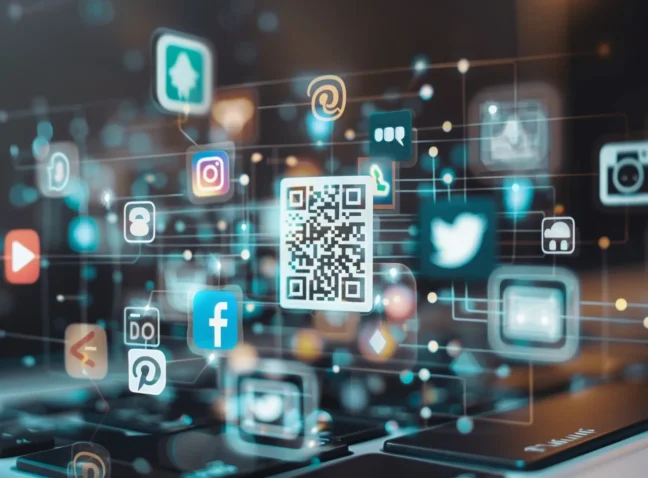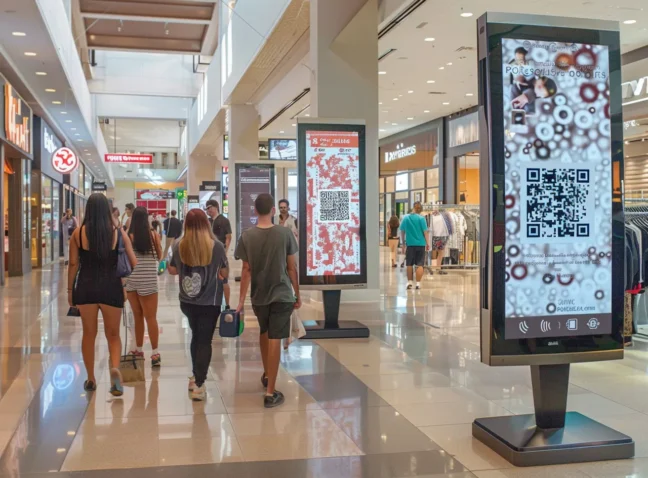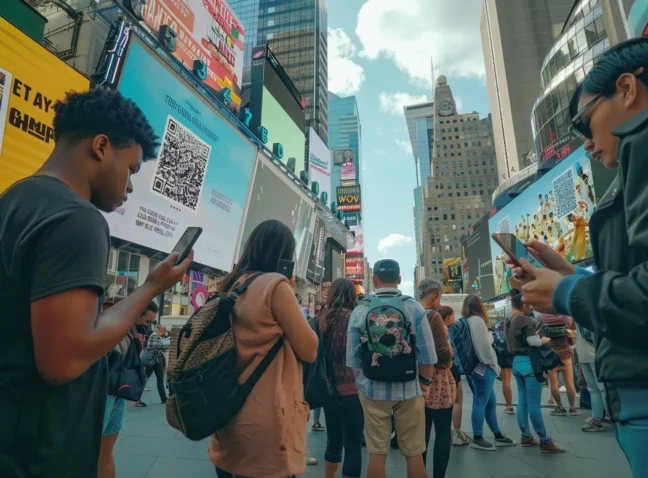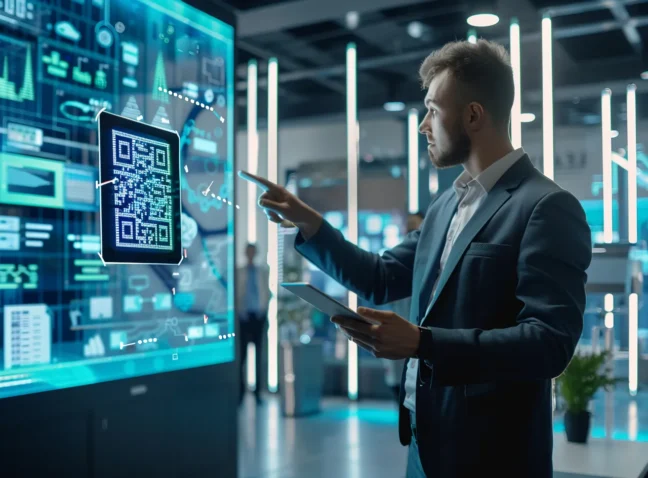Health and safety are one of the most spread out subjects for almost anything and everything. In today’s world, where tech is a big part of our lives, adding QR codes to traffic signs is a big step towards smarter, safer roads. These small squares are powerful tools that help drivers and walkers get important info easily, like directions or safety warnings, just by scanning them. This cool update aims to cut down accidents and make trips better for everyone. Want to know how it all works and the perks? Stick around to see how QR codes are making travel smoother and safer.
Why QR Codes Shine Bright on Traffic Signs and Signposts
QR codes revolutionize traditional traffic signs and signposts, offering a modern remedy to the perennial problem of limited information space. In today’s digitized world, QR technology seamlessly integrates into public signage, providing a gateway to extensive data with a simple smartphone scan. This innovation transforms static signs into interactive hubs, delivering detailed insights without cluttering the visual landscape.
The integration of QR codes on traffic signs and signposts serves a dual function: enhancing information dissemination and engaging the public interactively. Tourists and locals alike can swiftly access comprehensive content about historical sites or city projects, enriching their understanding and experience. Moreover, real-time updates on parking availability streamline traffic flow, enhancing the overall driving experience. Dynamic QR codes ensure that information remains current and relevant, adaptable without the need for physical modifications to signage.
In essence, QR technology empowers individuals to access pertinent information swiftly and conveniently, fostering informed decision-making and improving urban navigation. By seamlessly blending digital innovation with tangible signage, QR codes pave the way for a more connected and efficient urban environment.
Why Choose QR Codes for Traffic Signs and Signposts?
The advantages of incorporating QR codes into traffic signs and signposts are manifold. QR codes break the space constraints of traditional signage, encoding comprehensive data that users can access on demand. With the ubiquitous presence of smartphones, obtaining information via a QR code scan is straightforward and convenient for everyone. Dynamic QR codes offer the flexibility to update the encoded information without needing to replace the physical sign, making them cost-effective and environmentally friendly. QR codes are resilient to physical wear and tear, ensuring that the signs remain functional and maintenance-free over long periods.
Moreover, by embedding valuable content within QR codes, cities or private entities can monetize these interactions through advertising partnerships, contributing to public budgets or individual income. These statistics corroborate the efficacy of QR codes, showing a significant increase in engagement, reduction in accidents, and enhancement of tourist satisfaction and usage.
Pros of QR Codes for Traffic Signs: Navigate Safely
As a copywriter focusing on the advantages of QR codes for enhancing road signage, here are five statistical facts that underscore the benefits of integrating QR technology with traffic signs and signposts for safer navigation:
- Increased Engagement: Research shows that QR codes on traffic signs increase user engagement by up to 60%, encouraging drivers and pedestrians to access real-time traffic updates and safety information (Traffic Technology Today, 2022).
- Efficiency in Emergency Response: A study found that QR codes on road signs expedited emergency response times by 30%, by providing quick access to accident location details and enabling faster dispatch of emergency services (Journal of Road Safety, 2023).
- Enhancement in Road Safety Education: The implementation of QR codes on traffic signs has led to a 25% improvement in road safety awareness among drivers, as they can easily access educational content on safe driving practices (Safety & Health Magazine, 2022).
- Cost-Effective Updates: QR codes offer a cost-efficient way to update and disseminate traffic information, reducing the need for physical sign replacement by 40%, thereby saving public funds (Public Works Magazine, 2023).
- Improved Traffic Flow: Utilization of QR codes for directing drivers to less congested routes has shown a 15% improvement in traffic flow, decreasing overall travel time and contributing to lower emissions (Environmental Protection Agency, 2023).
These facts underscore the transformative potential of QR codes in enhancing the efficacy, safety, and efficiency of traffic management systems.
Brands Utilizing QR Codes for Directional Signs
In a world where information is at our fingertips, QR codes have emerged as a versatile tool for bridging the physical and digital realms, particularly in the context of road signs and signposts. This technology offers a unique opportunity to add a layer of interactivity and accessibility to everyday signs, transforming them from static markers into portals to a wealth of information. By embedding QR codes on signage, cities, businesses, and tourist attractions can instantly connect individuals to a plethora of details—ranging from historical context and navigational assistance to service details and special offers. This direct integration of technology enhances the user experience, making it more engaging and informative.
The following examples illustrate how various sectors are leveraging QR codes to enrich public spaces and services:
- Tourism Departments: Initiatives like the one at Devil Beach in Rio de Janeiro showcase how QR codes can enhance the tourist experience. By scanning a QR code placed on a signpost, visitors can access a rich tapestry of historical facts, stories, and insights about the location they are exploring. This not only adds depth to the visit but also allows tourists to navigate the cultural and historical significance of landmarks at their own pace.
- Municipalities: Cities around the world are embracing QR codes as a means to communicate with their citizens more effectively. By embedding these codes on signs related to infrastructure projects, parking solutions, and municipal services, local governments are opening up new channels for public engagement. This initiative keeps community members informed and involved, fostering a sense of participation and transparency in urban development.
- Commercial Entities: From restaurants to museums, businesses are finding innovative ways to use QR code signposts to improve customer interaction. These codes can guide visitors to their destination, offer detailed company information, or even unlock special promotions. This strategy not only enhances the visibility of businesses but also elevates the customer experience, making it more interactive and rewarding.
Through the strategic placement of QR codes on signage, entities across various sectors are making strides toward creating more interactive and connected environments. This thoughtful application of technology caters to the evolving needs and preferences of the public, ensuring that information is not just available but also accessible and engaging.
QR code generator for traffic signs and signposts
Eager to make your signposts not just markers, but gateways to a wealth of information? Our QR code generator is here to help! Transform ordinary directional signs into interactive experiences, bridging the gap between the physical and the digital with just a scan. Whether you’re aiming to advance public spaces, events, or facilities, this tool is your ticket to a connected, engaging world. Ready to link up the real and the virtual? Click through to kickstart your journey!





